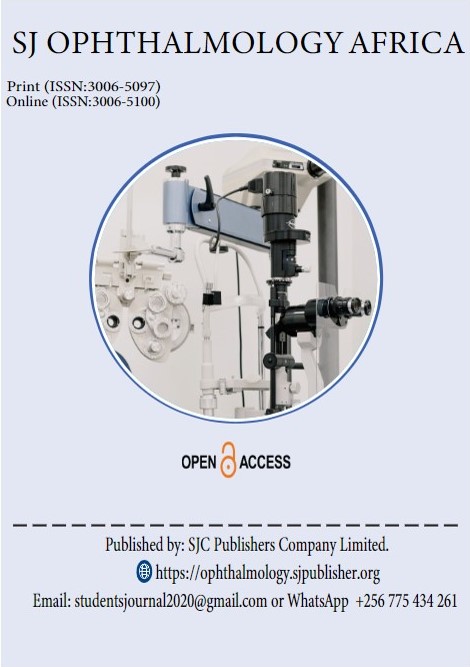FACTORS ASSOCIATED WITH THE PREVALENCE OF OPHTHALMIA NEONATORUM AMONG NEONATES RECEIVING HEALTH CARE SERVICES AT JINJA REGIONAL REFERRAL HOSPITAL.
DOI:
https://doi.org/10.51168/xdxedk68Keywords:
Prevalence of Ophthalmia Neonatorum, Neonates, Healthcare Services, Jinja Regional Referral HospitalAbstract
Background
The study delved into Ophthalmia Neonatorum (ON), a neonatal eye infection primarily caused by Neisseria gonorrhea and Chlamydia trachomatis. The research, conducted at JRRH in Eastern Uganda, aims to determine the prevalence of ON among neonates receiving healthcare services.
Methodology
A cross-sectional quantitative approach was employed, focusing on neonates with ON through a convenient sampling process.
Results
The prevalence of Ophthalmia Neonatorum is highest 20(50%) in the eastern region, followed by northern 10(25%), then central 6(15%), and then Western 4(10%). The majority of neonates with ON were aged 1-7 days, presenting with symptoms like discharge, redness, swollen eyelids, and tearing. Bilateral eye involvement was more prevalent than unilateral. The prevalence of ON was notably higher in the Eastern region compared to other regions studied, possibly influenced by the geographical focus of the research.
Conclusion
The study identified the prevalence of ON among neonates at JRRH, emphasizing the Eastern region's higher incidence. The majority of neonates with ON were from the Eastern region, while a history of sexually transmitted diseases was associated with the infection.
Recommendation
Community awareness campaigns to enhance early prevention through healthcare workers, village health teams, and various communication channels are recommended.
Downloads
Published
Issue
Section
License
Copyright (c) 2024 Amos Byaruhanga , Claire Agengo, Violet Alimwenda (Author)

This work is licensed under a Creative Commons Attribution-NonCommercial-NoDerivatives 4.0 International License.

